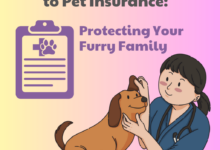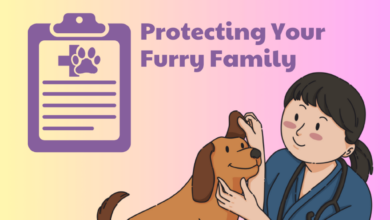Cat Purr-tection: A Guide to Pet Health Insurance for Your Feline Friend
Have you ever looked at your furry feline companion and thought, “What if something happened to them?” As a responsible pet owner, you want to provide the best possible care for your furry friend, and that includes protecting their health. But unexpected veterinary expenses can put a strain on your budget. That’s where cat pet health insurance comes in. It’s like a safety net for your pet, providing peace of mind and financial assistance when they need it most.
Contents
- 1 1. Types of Cat Pet Health Insurance Policies
- 2 2. Coverage Options
- 3 3. Policy Limits and Deductibles
- 4 4. Pre-Existing Conditions
- 5 5. Waiting Periods
- 6 6. Premiums
- 7 7. Choosing a Cat Pet Health Insurance Company
- 8 8. Filing a Claim
- 9 9. Benefits of Cat Pet Health Insurance
- 10 10. Getting Started with Cat Pet Health Insurance
- 11 Benefits of Cat Pet Health Insurance
- 11.1 1. Financial Protection Against Unexpected Veterinary Costs
- 11.2 2. Peace of Mind and Worry-Free Pet Ownership
- 11.3 3. Access to Quality Veterinary Care
- 11.4 4. Reduced Stress and Anxiety
- 11.5 5. Coverage for Chronic Conditions and Pre-existing Illnesses
- 11.6 6. Emergency Fund for Pet-Related Expenses
- 11.7 7. Variety of Policy Options
- 11.8 8. Customizable Coverage Amounts
- 11.9 9. Convenience and Flexibility
- 11.10 10. Long-Term Savings
- 12 5 Essential Features to Look for in Cat Pet Insurance Plans
- 13 Thanks for Dropping By!
1. Types of Cat Pet Health Insurance Policies
There are two main types of cat pet health insurance policies: accident-only policies and comprehensive policies. Accident-only policies only cover the costs of injuries sustained in accidents, while comprehensive policies cover a wider range of expenses, including illnesses, injuries, and preventive care.
2. Coverage Options
Cat pet health insurance policies can cover a variety of expenses, including:
- Veterinary exam fees
- Diagnostic tests
- Hospitalization
- Surgery
- Medications
- Dental care
- Preventative care
3. Policy Limits and Deductibles
Policy limits refer to the maximum amount that the insurance company will pay out for covered expenses. Deductibles are the amount that the policyholder must pay before the insurance company begins to cover expenses.
4. Pre-Existing Conditions
Pre-existing conditions are medical conditions that the cat had before the policy was purchased. Most cat pet health insurance policies do not cover pre-existing conditions.
5. Waiting Periods
Waiting periods are the amount of time that the policyholder must wait before the insurance company begins to cover expenses. Waiting periods can vary depending on the type of coverage and the insurance company.
6. Premiums
Premiums are the monthly or annual payments that the policyholder makes to the insurance company. Premiums can vary depending on the type of coverage, the policy limits, the deductibles, and the age and breed of the cat.
7. Choosing a Cat Pet Health Insurance Company
There are many different cat pet health insurance companies to choose from. It is important to compare the policies and rates of different companies before making a decision.
8. Filing a Claim
If your cat needs medical care, you will need to file a claim with your insurance company. The claim form will ask for information about the cat’s medical condition, the veterinary expenses, and the policyholder’s contact information.
9. Benefits of Cat Pet Health Insurance
Cat pet health insurance can provide peace of mind and financial protection in the event that your cat needs medical care.
10. Getting Started with Cat Pet Health Insurance
If you are considering purchasing cat pet health insurance, it is important to do your research and compare the policies of different companies. Once you have found a policy that meets your needs, you can enroll your cat and start enjoying the peace of mind that comes with knowing that your furry friend is protected.
Benefits of Cat Pet Health Insurance
1. Financial Protection Against Unexpected Veterinary Costs
Unexpected veterinary expenses can strain your budget, but pet health insurance provides a safety net to cover the costs of medical treatments, surgeries, and diagnostic tests. It safeguards your wallet from the financial burden of pet-related medical emergencies.
2. Peace of Mind and Worry-Free Pet Ownership
Knowing that your furry friend is covered in case of unforeseen medical situations brings peace of mind. You can focus on providing the best care for your cat without worrying about the financial consequences.
3. Access to Quality Veterinary Care
Pet health insurance allows you to prioritize your cat’s health without compromising on quality veterinary care. By covering expenses, it ensures that your cat receives timely and appropriate medical attention when needed.
4. Reduced Stress and Anxiety
Financial stress over veterinary bills can take a toll on pet owners. Pet health insurance mitigates this stress by removing the financial burden associated with medical expenses. It allows you to focus on providing love and support to your pet rather than worrying about finances.
5. Coverage for Chronic Conditions and Pre-existing Illnesses
While some policies may have limitations, some pet health insurance plans offer coverage for chronic conditions and pre-existing illnesses. This provides ongoing support for your cat’s health, ensuring they receive the care they need throughout their lives.
6. Emergency Fund for Pet-Related Expenses
Pet health insurance acts as an emergency fund specifically dedicated to your cat’s medical needs. It ensures that you have financial resources available in case of unexpected accidents or illnesses.
7. Variety of Policy Options
Pet health insurance providers offer a range of policy options to suit different budgets and coverage needs. You can choose from comprehensive plans that cover a wide range of expenses to more basic plans that prioritize essential care.
8. Customizable Coverage Amounts
The amount of coverage you choose will determine your monthly premium. By adjusting the coverage amount, you can tailor your policy to meet your specific needs and financial constraints.
9. Convenience and Flexibility
Reputable pet health insurance companies provide convenient and flexible coverage. You can easily enroll your cat and manage your policy online or through a mobile app.
10. Long-Term Savings
While monthly premiums may seem like an expense, pet health insurance can save you a significant amount of money in the long run. By covering major veterinary expenses, it prevents you from depleting your savings or incurring high-interest debt.
5 Essential Features to Look for in Cat Pet Insurance Plans
When choosing a cat pet insurance plan, consider these essential features to ensure your furry friend receives the best possible care:
1. Coverage for Routine Care and Preventative Services
Comprehensive cat insurance plans cover not only accidents and illnesses but also routine care and preventive services. These may include wellness exams, vaccinations, spaying or neutering, and dental cleanings. Such coverage helps maintain your cat’s overall health and reduces the risk of costly medical issues later on.
2. Customizable Coverage Options
Flexible insurance plans allow you to tailor the coverage to meet your cat’s specific needs. Options include varying levels of deductibles (the amount you pay out-of-pocket before insurance kicks in) and co-pays (a percentage of the covered expenses you pay). Customizing coverage ensures you find a plan that balances affordability and comprehensive protection.
3. Wide Range of Veterinary Services
Look for plans that cover a broad spectrum of veterinary services, including diagnostics, treatment, surgery, and hospitalization. Coverage should extend to both emergency and non-emergency situations. This ensures your cat receives the necessary care, regardless of the health issue it faces.
4. Reimbursement or Direct Payment
Insurance plans offer two payment options: reimbursement or direct payment to the veterinary clinic. Direct payment simplifies the claims process, allowing you to focus on your cat’s recovery. Reimbursement requires you to pay upfront and then file a claim for reimbursement. Choose the option that aligns best with your budget and convenience.
5. Cap on Annual Coverage and Lifetime Limits
Most plans impose annual coverage limits and lifetime maximums, which determine the total amount of coverage available over the cat’s lifetime. Carefully review these limits to ensure they meet your cat’s potential health needs. Consider plans with higher coverage limits if your cat has a pre-existing condition or is likely to require specialized care.
| Feature | Benefits |
|---|---|
| Routine Care Coverage | Maintains cat’s health and prevents costly issues |
| Customizable Options | Tailors coverage to specific needs |
| Wide Range of Services | Ensures comprehensive care for all health issues |
| Direct Payment Option | Simplifies claims process and reduces out-of-pocket expenses |
| Review Coverage Limits | Ensures adequate coverage for your cat’s health needs |
Thanks for Dropping By!
Well folks, that wraps up our little chat about kitty cat insurance. I hope you found it helpful and entertaining. If you have any more questions, don’t hesitate to give us a holler. And be sure to check back soon for more paw-some pet-related content. Until then, stay paw-sitive!








